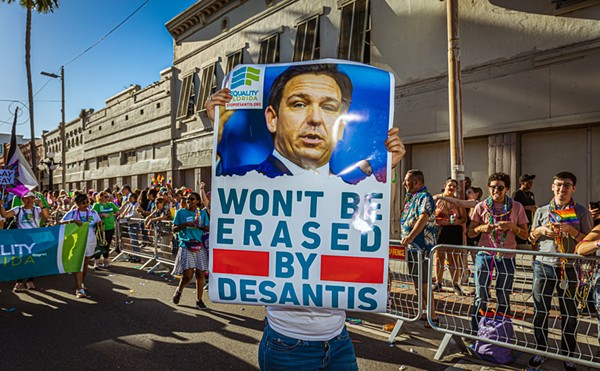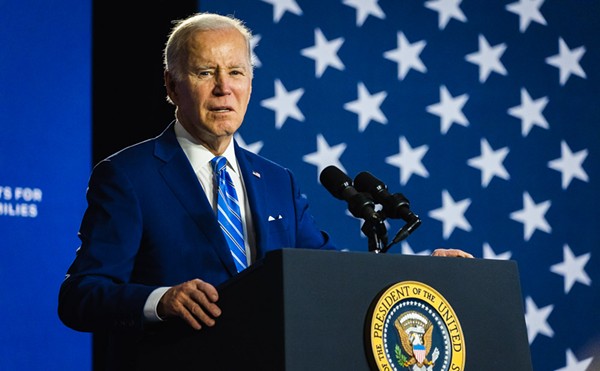For the last four years, I have watched the media reports, with an acceptable level of parental anxiety, of one school shooting after the next, waiting for the other shoe to drop and asking myself: when will it happen at FSU?
Last Thursday, all of my parental fears boomeranged back to me when I switched on the morning news. It was finally and unfortunately our turn in this ongoing and macabre drama of displaced anger directed toward our schools and institutions of higher learning.
My daughter, Amelia Watts, is a senior at FSU.
Lone gunman, attorney and Florida State University alum, Myron Mays opened fire at the entrance of Strozier Library while unsuspecting students crammed for final exams shortly after midnight on Thursday.
University and Tallahassee police, who very recently had been doing active shooter drills on campus, responded by ending Myron Mayís life in a hail of bullets, while three students lay nearby bleeding.
Students inside the library are reported to have heard the initial shots and then returned to their studies believing the noise to be a prank or fireworks. Moments later, their concentration was again broken, this time by the shrill timber of the alarm and an announcement telling them that a shooter was in the building.
Exam-time pranks have been a university tradition since long before I was a student. Some jokester, hoping to delay final exams, sets off a fire alarm or calls in a bomb scare. But this was no prank and, unfortunately, it appears that it is already yesterday's news.
Since the 1999 Columbine Massacre, America has experienced a steady and alarming escalation in the number of school shootings and an unfortunate desensitization to them.
The first known mass school shooting occurred during the Pontiac's Rebellion on July 26, 1764. Four armed men stormed the schoolhouse near present-day Greencastle, Pa., shooting to death the principal and 10 children, according to K12 Academics.
The rising numbers are frightening. This week's FSU shooting is the 101st school shooting nationwide since my daughter left home for FSU in the fall of 2010. Approximately 35 of those could be characterized 'mass shootings," and there is more bad news: the frequency is increasing exponentially. In 2010 there were 5 school shootings, in 2011 there were 10, 2012 saw 14; 2013 had a whopping 32, and thus far in 2014 there have been 40.
All levels of education appear to be equally vulnerable, and the reasons for the shootings are myriad.
Many are gang-related; some are related to failed relationships among co-eds, while others are targeted at hated teachers, administrators and even janitorial staff.
A little more than a third of school shootings draw the full attention of the national media. Ever hopeful, my daughter texted, "I hope that the media focuses on the way that access to firearms played into the scenario and the recovery of the victims rather than fixating on the shooter. <3" At that moment, I agreed, but the more I read, the more convinced I became that two factors in school shootings cannot be denied: our broken mental-health system and easy access to automatic weapons both play a huge role. The vast majority of these shooters leave a lot of clues, and a long trail, before tragic events occur. Following the trajectory of a shooter's breakdown and making accountable those who let them slip through the semi-truck-wide cracks in our mental-health system is the best bet we have to stop future attacks. Myron May reputedly suffered from ADHD, and was on medication for that condition. The meds made him paranoid, according his former roommate in a recent article in the Tallahassee Democrat. Other college friends described May as a hard worker, troubled, but not a danger to himself or others. After college, he moved to Texas and then New Mexico, where he became a prosecutor and had a stable long-term girlfriend.
In September, however, his already precarious mental health started to devolve. Paranoid and delusional (he thought his house was bugged and there were voices coming from the walls), he sought the help of his girlfriend. She notified the Las Cruces police, who then intervened; May was placed under observation, but later released.
A family friend from his hometown, Wewahitchka, Fla., said that he had lost his job, moved home and recently filed for bankruptcy. All the signs were there that May was on the edge. Clearly and tragically, our revolving-door approach to mental health failed, once again.
According to educational and forensic experts, there is no typical school shooter. Mays certainly did not fit the widely held stereotype that shooters are socially isolated white males obsessed with playing violent video games.
"There is actually no stereotype," said Dewey Cornell, the director of the Youth Violence Project at the University of Virginia, in Charlottesville in an interview with Education Week. "There is a human tendency to look for predictive factors, but if we apply those to the general population, we will find many false positives."
That same article cites a 2002 report by the U.S. Secret Service National Threat Assessment Center that concludes "there is no accurate or useful 'profile' of students who engaged in targeted school violence."
One thing that most of the shooters have in common is that the majority told at least one person about their plans before the attack. Anger and paranoid delusion are also common psychological threads.
The other shoe has finally dropped and, oddly enough, I have not received a single communication from the University. It's disappointing, and it makes me wonder, as a culture, are we becoming so indifferent, so callous and numb to these horrifying events that there is no need for institutional response or reassurance?
Don't get me wrong — I am so thankful that the shooting was not a successful rampage and early reports indicate that University police acted expeditiously and appropriately. But all of us in the FSU family are a little on edge and a lot less innocent.
At a candlelight vigil in the early evening on Thursday, thousands of students and faculty gathered to declare their solidarity with the shooting victims and to demonstrate their dogged determination to move forward in an uncertain world without fear.














